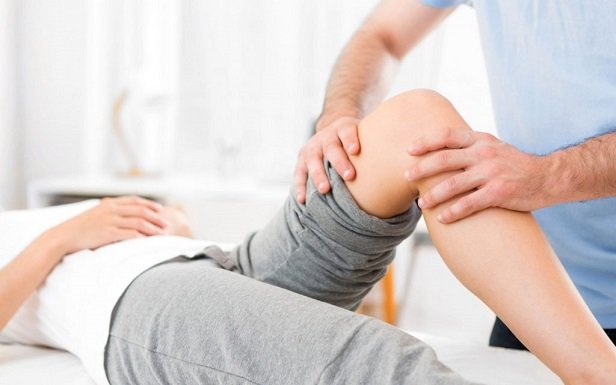
Dr. Sanjay Barik
Knee & Shoulder Surgeon
Advanced Physiotherapy Center

What is Physiotheraphy For Joints
Physiotherapy plays a crucial role in the treatment regimen for many individuals with arthritis. As integral members of the healthcare team, physiotherapists assist you in continuing or regaining an active and self-reliant lifestyle, both in your personal and professional environments. They possess a deep understanding of movement analysis and offer guidance on safeguarding your joints.
Specialized physiotherapists have expertise in identifying and treating issues related to joints and muscles, and it’s common for your general practitioner (GP) to direct you to a specialist physiotherapist instead of a rheumatologist or an orthopaedic surgeon.
Your physiotherapist will:
- Provide guidance and comfort
- Boost your confidence in managing your health condition
- Address any questions or concerns you might have
- Establish realistic objectives to maintain your highest level of activity
How can physiotherapy help?
Maintaining an active lifestyle is crucial when dealing with arthritis. A common concern among individuals is that exercise might exacerbate their pain or cause further joint damage. However, it’s essential to remember that joints are meant to move, and lack of activity can lead to muscle weakening.
A physiotherapist will discuss your current activity levels and any specific issues you’re encountering. They’ll conduct a thorough assessment of your joints, evaluating your muscle strength and how much you can move them. This assessment allows them to create a personalized program of treatments, exercises, and activities designed just for you.
This personalized program might include:
- Practical advice on how to gradually increase your level of physical activity, goal setting, and finding the optimal balance between rest and exercise.
- Guidance on preventing injuries related to exercise, including recommendations on equipment or training necessary for starting a new physical activity.
- A tailored set of gradual exercises aimed at enhancing your fitness, strength, flexibility, and mobility, which you can also perform at home.
- Aquatic therapy (also known as hydrotherapy) sessions in a warm-water pool to aid your exercise routine.
- Strategies and treatments for pain management, such as the use of heat or ice packs, massage, and acupuncture.
- The provision of walking aids or splints to support your mobility and independence.
Pain relief treatments
Medications are beneficial, but physiotherapists can introduce you to additional pain relief methods that complement your medical treatment. You’ll be equipped to apply some of these techniques on your own between sessions, such as:
- Ice packs for cooling down hot, inflamed joints
- Heat packs for easing tense, fatigued muscles
- Splints for stabilizing swollen or achy joints
- TENS (transcutaneous electrical nerve stimulation), a method that modifies pain signals sent to your brain. It involves a small, portable device that delivers electrical pulses through pads on your skin, creating a tingling feeling that many find relieving.
Moreover, some physiotherapists might offer specialized training in other pain management strategies, including:
- Massage or manipulation techniques to alleviate stiffness and pain, soothe muscles, and enhance joint mobility
- Acupuncture, believed to interrupt pain signals to the brain and trigger the release of endorphins, the body’s natural painkillers
- Electrotherapy methods like ultrasound and low-level laser therapy, aimed at promoting the healing process and thus diminishing pain
- Steroid injections for particularly painful joints, which can be a temporary measure to reduce pain and facilitate increased activity.
PHYSIOTHERAPY TREATMENT FOR JOINT PAIN
Cryotherapy
Cryotherapy involves applying cold to the affected joint area, which can be achieved through ice packs, cold wraps, or specialized cryotherapy devices. This method helps in reducing inflammation, numbing the area to alleviate pain, and minimizing swelling. It’s particularly useful for managing acute injuries like sprains or strains and can be combined with other therapies to boost their effectiveness.
Thermotherapy
Thermotherapy entails the use of heat on the affected joint area, which can be administered via hot packs, warm towels, hot water baths, or heating pads. This approach aids in enhancing blood circulation, relaxing muscles, and easing stiffness and pain in joints. It’s especially beneficial for chronic issues such as osteoarthritis or muscle spasms, though caution is advised to prevent burns or overheating.
Transcutaneous Electrical Nerve Stimulation (TENS)
TENS utilizes low-level electrical currents delivered through electrodes on the skin near the area of pain. It helps relieve pain by stimulating nerve fibers, thereby interrupting pain signals to the brain. TENS is suitable for managing both acute and chronic joint pain.
Interferential Current Therapy (IFT)
IFT employs medium-frequency electrical currents that reach deeper into the tissues compared to TENS, aiding in pain relief, muscle spasm reduction, and improved circulation. It is frequently used to address joint pain and inflammation.
Electrical Muscle Stimulation (EMS)
EMS involves electrical currents that trigger muscle contractions, enhancing muscle strength, stability, and joint function around the affected area. It is typically incorporated into rehabilitation programs for joint pain and injuries.
Ultrasound Therapy
Ultrasound therapy, though not an electrical method, utilizes sound waves to create deep heat within tissues, facilitating improved blood flow, reducing inflammation, and alleviating joint pain. Ultrasound therapy is often employed alongside other treatment modalities for joint discomfort.


